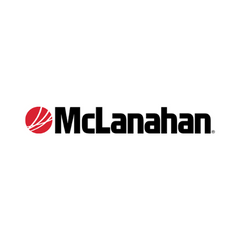Crying over spilled manure has become a favorite subject of mainstream media.
Animal agriculture is under fire in every region of the county over control of both manure nutrients and odors. New and stricter regulations, including Comprehensive Nutrient Management Plans, are increasingly adding to the expense and paper workload of animal agricultural producers.
Environmental issues are not restricted to the animal industry, however. Horticulture is also facing related problems. Containerized plants are produced in a soilless media where peat is a major component.
Peat is part of the wetlands ecosystem. Wetlands have accumulated a vast pool of organic carbon and currently hold about 390 to 455 petagrams (1,000,000,000,000,000 grams) of terrestrial carbon, or about one-third of the global carbon stock.
Peat harvesting is being regulated and peat prices are increasing as supplies decrease. In the late 1990s, now retired University of Florida Ag Engineering Professor Roger Nordstedt, former Florida Department of Environmental Protection Ag Liaison Jemy Hinton, entrepreneur Andy Tangeman, and University of Florida Regional Specialized Dairy Agent Mary Sowerby, began experimenting with the use of the first dairy drum composter in Florida.
Designed by Agrigy, Inc. (www.cowpeat.com), the composter was located at Gore’s Dairy, owned by Fred Gore, in Zephyrhills, Florida.
The 40-foot long by 10-foot diameter drum cylinder slowly rotated organic solids separated from flushed freestalls for three days, and composted them into a final product which looked like peat – hence the name it now goes by, cowpeat.
Jianjun Chen, associate professor of environmental horticulture at the University of Florida’s Mid-Florida Research and Education Center in Apopka, recently completed a four-year study of cowpeat. The goal of the study, funded by the Florida Department of Agriculture and Consumer Services, was to help the foliage plant industry find a peat substitute and dairy industry a profitable use of cow manure.
Chen and associates compared a standard commercial potting media of 20 percent perlite, 20 percent vermiculite, and 60 percent Canadian or Florida peat to media where cowpeat replaced the peat at 10 percent increments up to 60 percent of the total media.
The resulting 14 potting media were then used to root and germinate various foliage plants.
Their results showed:
1. All tested cuttings rooted and seed germination rates in cowpeat-substituted media were greater than or equal to those of control media.
2. Dieffenbachia produced in media containing 10 to 30 percent cowpeat without any chemical fertilizer had the greatest growth measurements.
3. Amounts of nitrogen and phosphorus leaching from the media with 10 to 30 percent cowpeat were equal to or much less than those of the control media fertilized with the commercial standard rate.
Chen concluded, “The use of cowpeat will provide the containerized plant industry with an alternative to peat, which in turn reduces peat mining and encourages drum composting of dairy manure, thus contributing to the well-being of our environment.”
Windrow composting is another method of processing dairy manure solids. Unfortunately, the end result of this process is not cowpeat in physical appearance or attributes.
Cowpeat is only created by using separated cow manure solids with less than 60 percent moisture in a drum digester. The slow rotation of the drum keeps the enclosed solids moving and aerated. Microorganisms ferment (decompose with release of gases) the contents and raise the temperature rapidly to between 150°F and 170°F.
The heat kills weed seeds, nematodes and most bacteria, leaving a product which is uniform and economically valuable.
Cowpeat is a win-win product. It can help the dairy industry be environmentally friendly and the containerized plant industry solve its peat problem. ANM
Andy Tangeman
Agrigy, Inc.
tange48@aol.com



